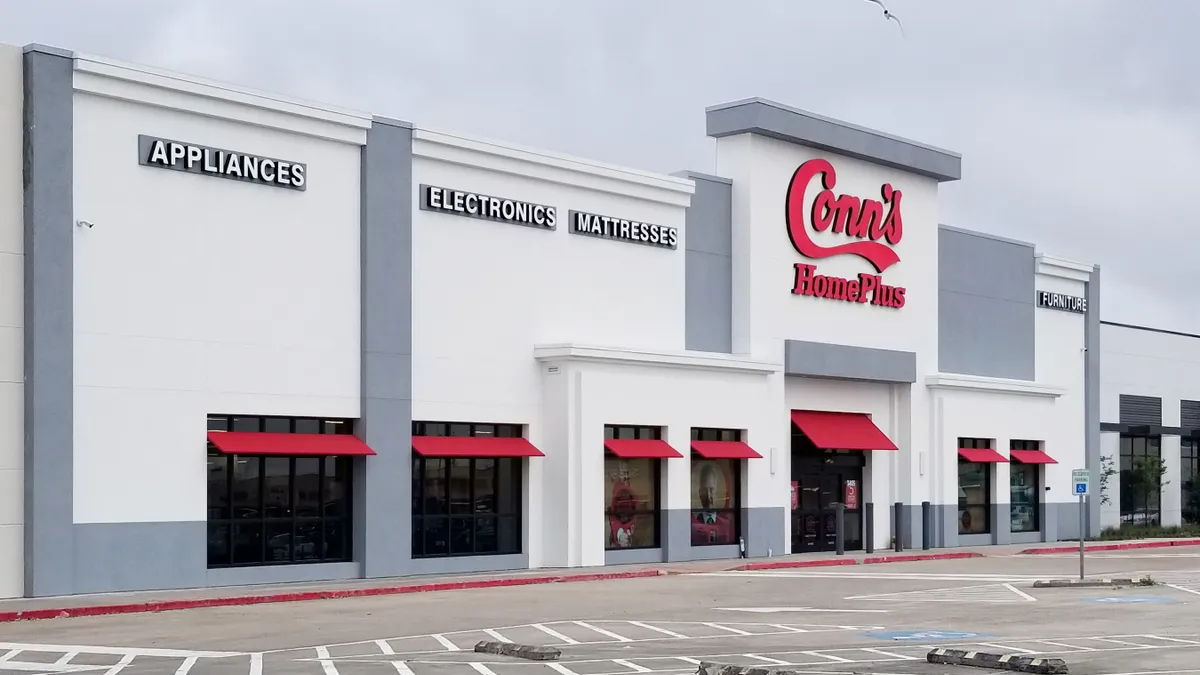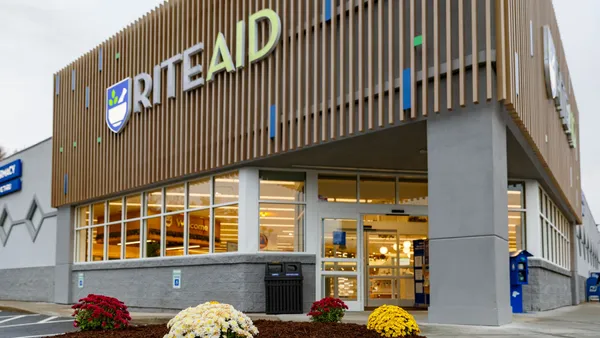Dive Brief:
- Conn’s Inc. on Tuesday filed for Chapter 11 in the U.S. Bankruptcy Court for the Southern District of Texas. The company plans to wind down its business, including shuttering its entire fleet of over 550 stores. Prior to filing for bankruptcy, Conn’s started going-out-of-business sales at about 105 stores under its two banners, Conn’s HomePlus and Badcock Home Furniture & More.
- The furniture and home goods retailer reported assets and liabilities each ranging from $1 billion to $10 billion. The company’s top-five creditors are collectively owed more than $57 million. Overall, Conn’s said it has $200 million in obligations to trade and unsecured creditors and about $530 million in total funded debt obligations.
- The company is seeking court approval to complete going-out-of-business sales by Oct. 31. Conn’s is also seeking court permission to reject store leases, per court filings.
Dive Insight:
Conn’s CEO Norman Miller said “a convergence of factors contributed” to the decision to file for bankruptcy.
The decision to acquire rival retailer W.S. Badcock late last year is one of them. The move generated costs that added to Conn’s liquidity challenges, Miller said in court documents.
“The acquisition of Badcock last year was arguably a mistake and has cost the company time and capital,” Neil Saunders, managing director of GlobalData, said in an email to Retail Dive. “Expanding in a very soft market was an error.”
While the height of the COVID-19 pandemic generated a spike in consumer spending on home decor purchases, increasing inflation and interest rates have dampened discretionary buying, Miller said.
“Conn’s is very much a victim of the slowdown in demand for home goods,” Saunders said. “Because consumers are under financial pressure and because they are not moving home as much as they once did, sales have slumped. The impact of these things has been sharper on Conn’s than for other retailers, partly because it has a lot of consumers on more modest incomes who rely on credit, which is now more expensive to service.”
According to Conn’s, about 61% of purchases were financed through Conn’s in-house credit program during the company’s 2024 fiscal year; 23% were financed through third-party or lease-to-own terms; and about 16% of purchases were made with cash or credit cards.
Conn’s relied on the issuance of debt to support its cash flows for operations and strategic initiatives in recent years. However, due to increasing interest rates, Miller said interest rate expenses increased from about $26 million for the year ended Jan. 31, 2021, to nearly $83 million for the year ended Jan. 31, 2024.
Of the $77 million Conn’s said it spent on 350 leases in fiscal year 2024, over $35 million of that figure was related to underperforming stores. The merger with Badcock also resulted in some redundant store locations, exacerbating what the company termed “location functionality.”
The increase in interest rates and costs of capital, coupled with the prospect of minimal to no relief in the near term, has negatively affected the company’s ability to manage its debt obligations, Miller said.
Conn’s began selling appliances in Texas in 1937. At the time of its bankruptcy filing, the company said it employed about 3,800 people and had 553 corporate and dealer retail stores across 15 states, 22 distribution and service centers and six corporate offices. Badcock was founded in 1904 in Florida. Before its deal with Conn’s, the company had 64 corporate locations and 310 independent dealer-owned stores.













